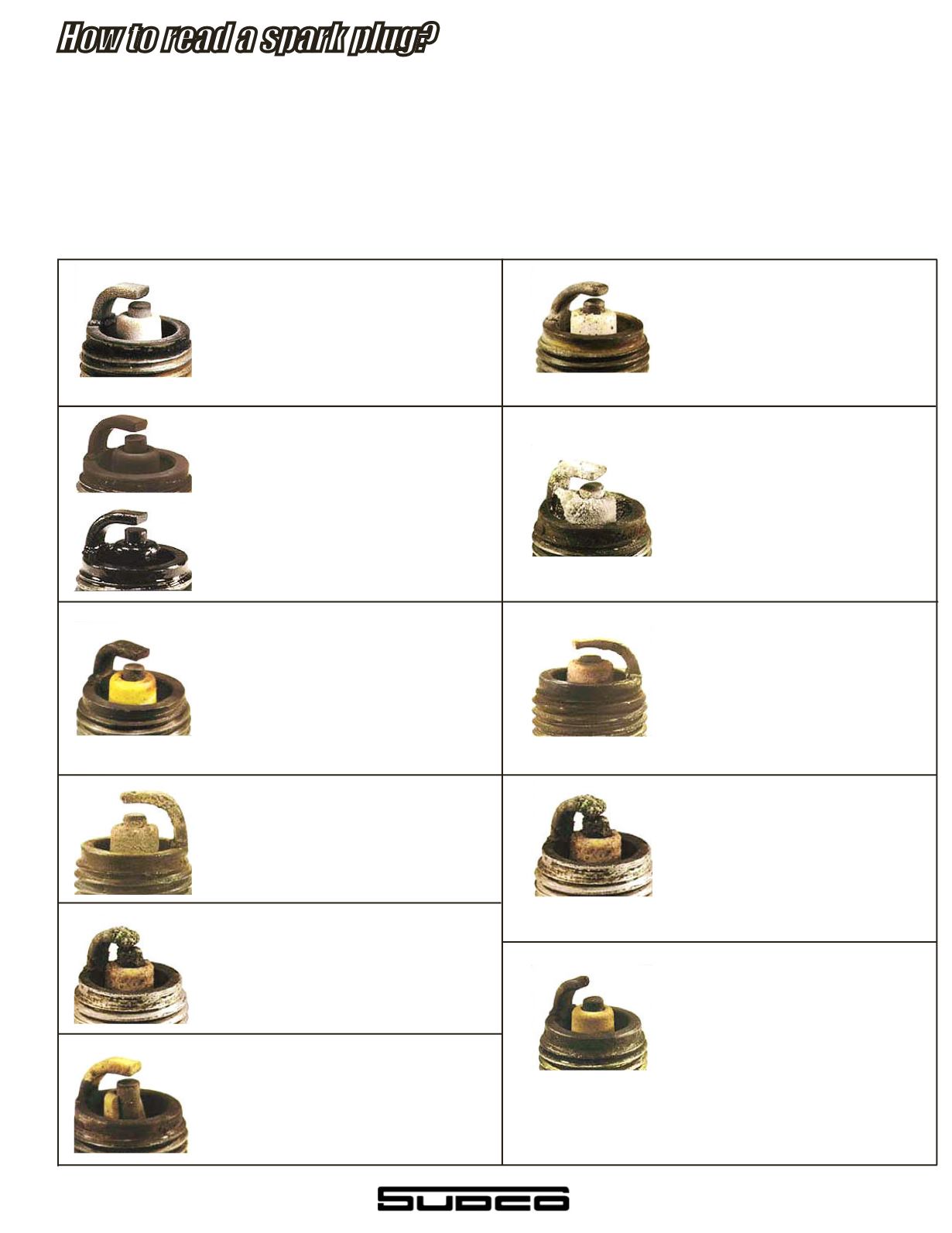

By examining the insulator iring nose color, an experienced engine tuner can determine a great deal about the engine’s overall operat
-
ing condition.
In general, a light tan/gray color tells you that the spark plug is operating at optimum temperature and that the engine is in good con
-
dition. Dark coloring, such as heavy black wet or dry deposits, can indicate an overly rich condition, to cold a heat range spark plug, a
possible vacuum leak, low compression, overly retarded timing or to large a plug gap.
If the deposits are wet, it can be an indication of a breached head gasket, poor oil control from ring or valve train problems or an ex
-
tremely rich condition—depending on the nature of the liquid present at the iring tip.
Signs of fouling or excessive heat must be traced quickly to prevent further deterioration of performance and possible engine damage.
Normal Condition
An engine’s condition can be judged by the
appearance of the spark plug’s iring end.
If the iring end of a spark plug is brown or
light gray, the condition can be judged to
be good and the spark plug is functioning
optimally.
Dry and Wet Fouling
Although there are many different cases,
if the insulation resistance between the
center electrode and the shell is over 10
ohms, the engine can be started normal
-
ly. If the insulation resistance drops to 0
ohms, the iring end is fouled by either wet
or dry carbon.
Overheating
When a spark plug overheats, depos
-
its that have accumulated on the insu
-
lator tip melt and give the insulator tip
a glazed or glossy appearance.
Deposits
The accumulation of deposits on the
iring end is inluenced by oil leakage,
fuel quality and the engine’s operating
duration.
Lead Fouling
Lead fouling usually appears as yellowish
brown deposits on the insulator nose. This
cannot be detected by a resistance tester at
room temperature. Lead compounds combine
at different temperatures. Those formed at
370-470°C (700-790°F) have the greatest
inluence on lead resistance.
Breakage
Breakage is usually caused by ther
-
mal expansion and thermal shock
due to sudden heating or cooling.
Normal Life
A worn spark plug not only wastes fuel
but also strains the whole ignition system
because the expanded gap (due to erosion)
requires higher voltages.
Abnormal Erosion
Abnormal electrode erosion is
caused by the effects of corro
-
sion, oxidation and reaction with
lead—all resulting in abnormal gap
growth.
Melting
Melting is caused by overheating. Mostly,
the electrode surface is rather lustrous and
uneven. The melting point of nickel alloy is
1,200~1,300°C (2,200~2,400°F).
Erosion, Corrosion and Oxidation
The material of the electrodes has oxi
-
dized, and when the oxidation is heavy,
it will be green on the surface. The
surface of the electrodes is also fretted
and rough.
How to read a spark plug?
558
Lead Erosion
Lead erosion is caused by lead
compounds in the gasoline which react
chemically with the material of the elec-
trodes (nickel alloy) as high temperatures;
crystal of nickel alloy fall off because of the
lead compounds permeating and separat-
ing the grain boundary of the nickel
alloy. Typical lead erosion causes the surface of the
ground electrode to become thinner, and the tip of the
electrode looks as if it has been chipped.
















